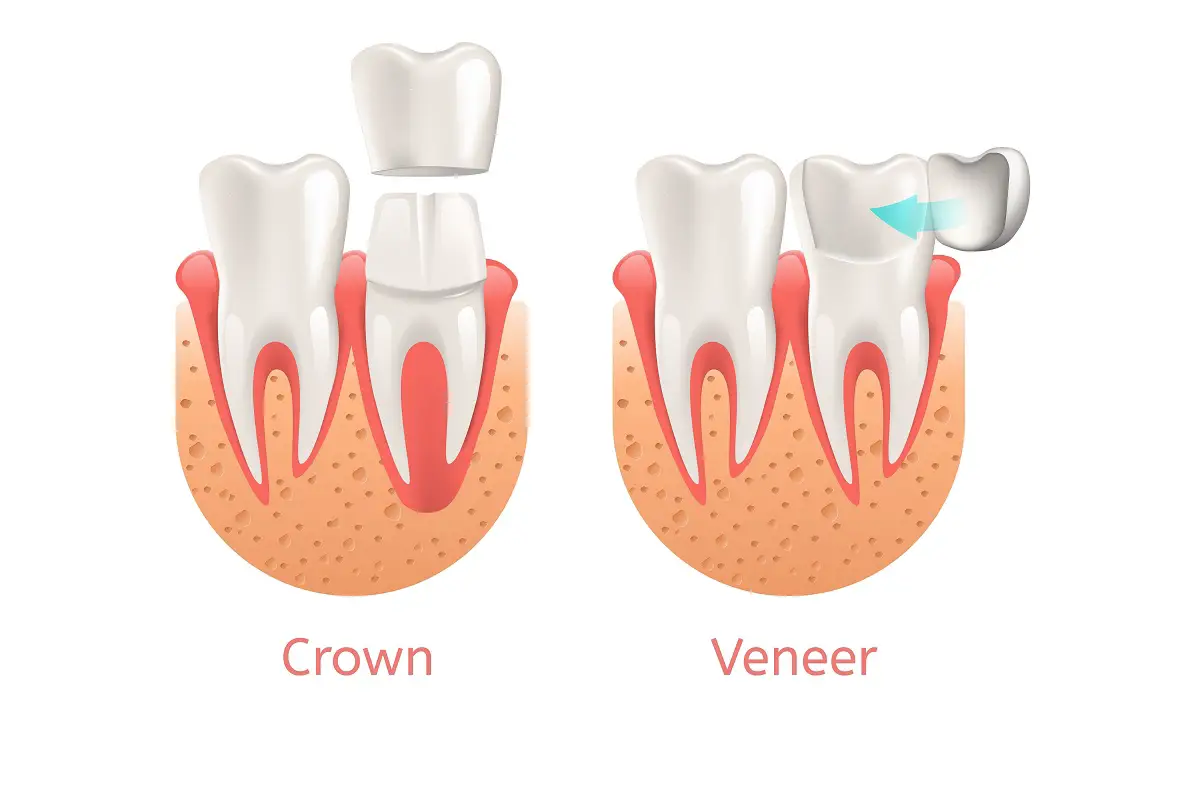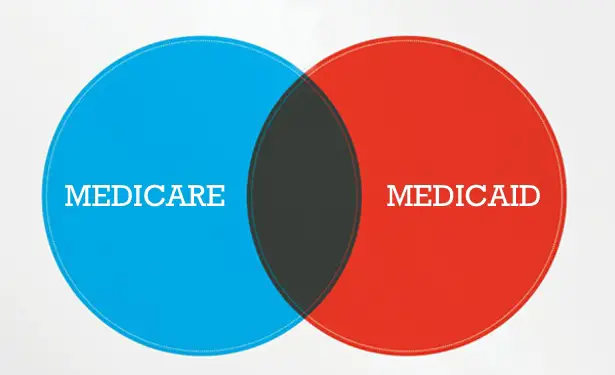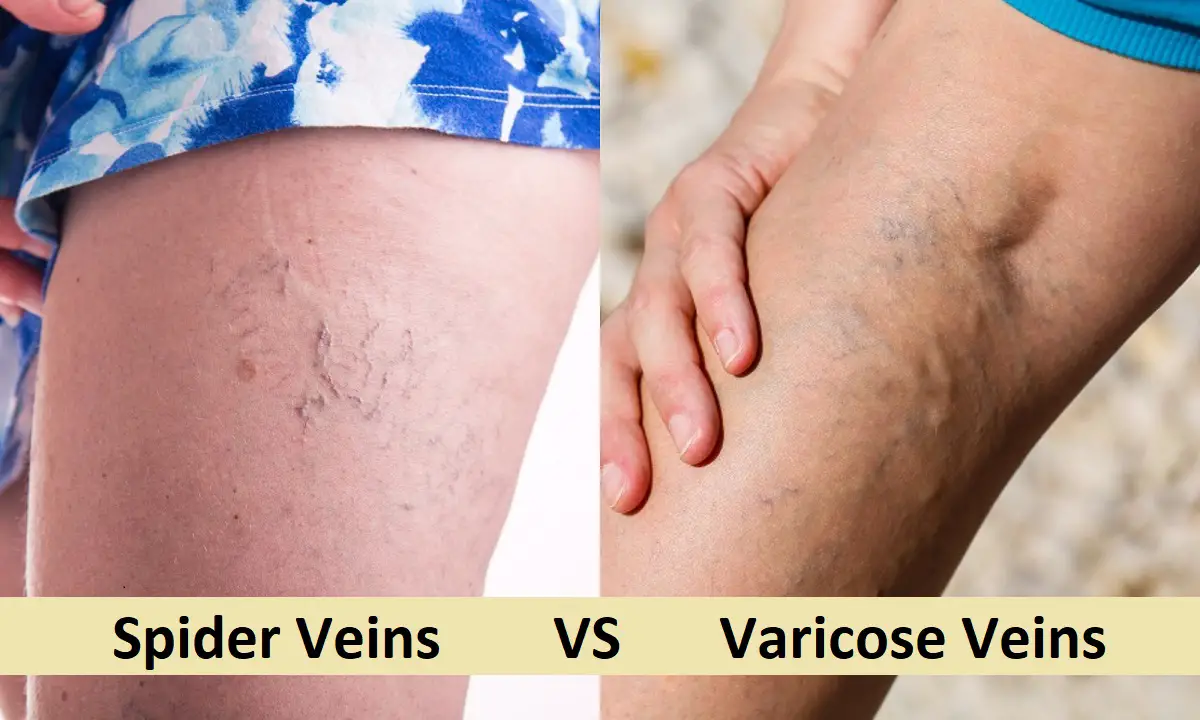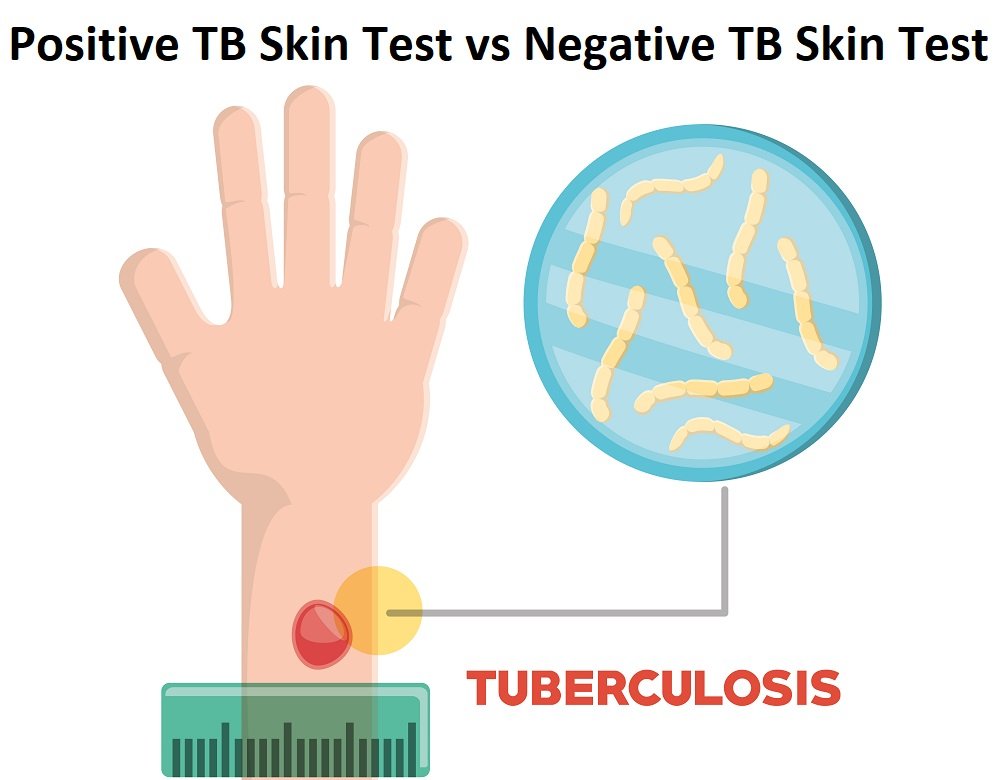Difference Between Dental Crown and Dental Veneer
Are you in need of a dental restoration method to enhance the function and looks of your teeth? Two of the most popular ways to do that are dental crowns and veneers.
While they both have some similarities, knowing the difference between crown and veneer is crucial to make the decision about which one would be perfect for you.
Dental healthcare costs can rake up pretty quickly, so if you have a thorough idea regarding this and make an informed decision, you will not have to spend extra.
What Is a Dental Crown?

A crown is a method of dental restoration. It covers an entire tooth and has a thickness of around 2 millimeters. The crown can be made from all metal allow, all-porcelain, or a fusion of porcelain and metal. It is usually color-matched to the tooth it is being installed on unless the material is all metal.
For a crown, many parts of the tooth require filing or grounding, which helps prepare the tooth for the crown. If you are getting the crown to treat tooth decay, the decayed part will be removed by your dentist before they make the crown.
And if that is the case, then you might need additional build-up in that teeth to support the dental crown. The damaged tooth might also need building up.
What Is a Dental Veneer?
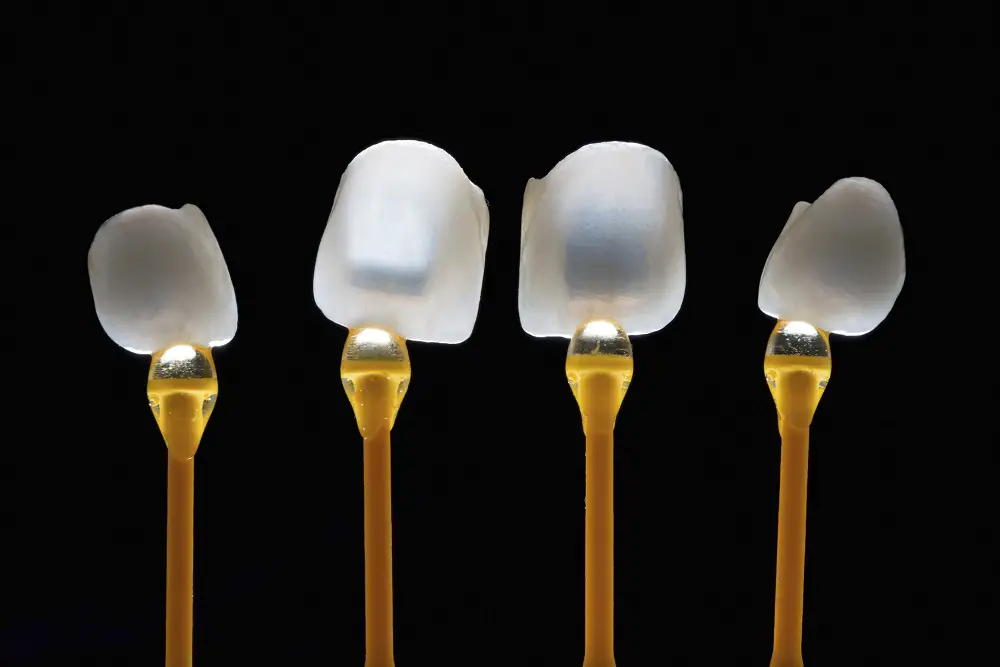
Like crowns, veneers are also a method of dental restoration. They cover the front of a tooth and have a thickness of around 1 millimeter. Veneers are less invasive than crowns because some part of the original tooth is left as is.
To install a veneer, the enamel on the front part of the tooth is grounded by the dentist to about half a millimeter. This roughens the surface to ensure a better bond. Now, this grinding might be painful, in which case you will get anesthetics. Some newer models on veneers do not require that much grinding.
The tooth must have enough enamel for a dental veneer to work well.
You can also read the differences between dental veneers and lumineers.
Which One Should You Choose: Crown or Veneer?
As you can see, both crowns and veneers are used for the same dental issues, which are discoloration, chips, cracks, decays, weakness, or crookedness. So, what are things that make them different? In this section, we will be discussing that so that you can decide which one would be the better option for you.
Condition of the Tooth
If your tooth is basically intact and has just a mild condition, such as a minor chip, discoloration, stains, small gaps between teeth, etc., then getting a veneer would be the better choice for you. It is less intrusive than a crown and will enhance the appearance of your tooth.
But if your tooth has more serious damage, such as a badly broken, decayed, or chipped tooth, then a crown would be more suitable for you. It will replace all of the parts that were damaged and act as a new tooth for you.
Purpose of Restoration
Dental veneers are used mainly for cosmetic purposes, as they improve the appearance of your teeth. So, if you are after a pearly smile, get veneers.
Crowns, on the other hand, are basically a replacement tooth. While they can improve the look of your teeth, that is not the primary purpose of getting them. People get crowns when the original tooth is so damaged that it cannot function as a normal tooth anymore.
Removal of the Original Tooth
As the veneer sits on the front of a tooth, many parts of the original tooth are left untouched. Only a thin layer at the front is removed to ensure better adhesion.
But, to accommodate the crown, a dentist will usually remove 60% – 75% of the original tooth. The crown will basically act as a new tooth while protecting the inner parts (parts of a tooth that stays inside the gum) of the original tooth.
So, if your tooth is badly damaged, it would be better for you to remove all the bad parts and get a new tooth, which is the crown. And if your tooth is in good health besides a minor issue, you really do not have to get rid of so much of it, so get a veneer.
Dental Insurance Coverage & Costs
Both crowns and veneers can cost a lot. The cost depends on the tooth size, the type of tooth it is, its placement in the mouth, and prices in the area you live in.
Since veneer is seen as a cosmetic procedure, it is elective. So, most dental insurance will not cover the cost of a veneer, as the conditions for getting it are not severe.
Crowns, on the other hand, are needed for very badly damaged teeth. So, most dental insurances will cover at least a part of the cost of a crown. Check with your insurance provider for more information.
The cost for getting a dental veneer ranges between $925 to $2500 for each tooth, according to the American Cosmetic Dentistry org. If you choose to get a porcelain veneer instead of a composite, you will have to shell out more cash.
As for crowns, the price depends on the material uses, the size of the affected tooth, the extent of preparation needed, etc. The price of only a crown ranges from $1000 to $3500 per tooth.
Keep in mind that this price is for the crown only. You may need to pay for additional services such as root canals, dental core build-up, etc., before your tooth is ready for a crown.
Coverage
A veneer covers only the frontal area of a tooth. So, much of the original tooth is still exposed to decays or cracks.
On the other hand, a crown covers all external parts of the tooth. So, it is better protected against all future damages.
Materials Used
Dental veneers usually come in only two materials – dental composite and porcelain. The former is more affordable but less durable. It is more prone to stains, chips, or breakage.
Usually, a veneer made of composite resin lasts around 3 – 5 years, whereas a porcelain one will last 10 – 15 years, depending on the care that you take. Porcelain veneers also maintain their hue for longer, as they have excellent stain resistance.
Dental crowns undergo more pressure compared to veneers, as the tooth is used to chew and crush food. This is why crowns come in many more materials than veneers. For the same reasons above, porcelain is a popular choice for crowns.
You can also choose metal crowns. Zirconia is a great option because it has high strength. Gold is another metal that can be used to make crowns. Crowns made of gold are great, as they are highly durable and biocompatible. Gold crowns also last the longest among all materials because of the high durability.
Some of Our Articles You May Want to Read:
- Plaque Vs. Tartar: 3 Key Differences
- Difference Between Invisalign and Braces
- Prognosis Vs. Diagnosis: 5 Major Differences
Difference Between Crown and Veneer: A Comparison Table
To sum up the main differences in a snap, we have prepared this table for you. So, here goes the key differences between crown and veneer –
| Parameters of Comparison |
Veneer |
Crown |
| Purpose of Getting | Cosmetic | Fixing major dental issues such as decay, cracks, root canal, etc. |
| Condition of Tooth | Minimal damage; basically intact | A high level of damage |
| Insurance | Usually not available for cosmetic purposes | Available |
| Cost Range | $925 to $2500 /tooth | $1000 to $3500 /tooth |
| Coverage | Only the front of the tooth | All of the tooth |
| Remaining Natural Tooth | A lot of the original tooth is left intact | 60 – 75% of the original tooth is removed |
| Thickness | 1 mm | 2 mm |
| Materials | Dental composite or porcelain | Porcelain, zirconia, gold, and many other materials |
Final Words
With the knowledge of the difference between crown and veneer, now you can pinpoint which one would be ideal for your tooth. Both of them can greatly improve your smile and the functionality of your tooth.
No matter which one you end up getting, remember to practice good oral hygiene and get regular dental checkups to ensure that they last long. That’s all for today. Till the next time, keep smiling!
